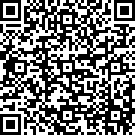Scan QR

One-way road markings play a critical role in regulating traffic flow and preventing head-on collisions. These markings clearly indicate the permitted direction of travel on designated one-way streets, helping drivers stay compliant and aware in both urban and rural settings.
Common one-way road markings include:
White arrows painted on the pavement pointing in the allowed direction.
Solid white or yellow lines to separate lanes going in the same direction.
Text-based symbols like “ONE WAY” for added clarity.
These markings are especially important near intersections, parking structures, and complex traffic systems. Understanding and obeying one-way markings ensures safer navigation and...
Scan QR

One-way road markings play a critical role in regulating traffic flow and preventing head-on collisions. These markings clearly indicate the permitted direction of travel on designated one-way streets, helping drivers stay compliant and aware in both urban and rural settings.
Common one-way road markings include:
-
White arrows painted on the pavement pointing in the allowed direction.
-
Solid white or yellow lines to separate lanes going in the same direction.
-
Text-based symbols like “ONE WAY” for added clarity.
These markings are especially important near intersections, parking structures, and complex traffic systems. Understanding and obeying one-way markings ensures safer navigation and smoother traffic operations. Traffic engineers and municipalities must maintain visibility and clarity to prevent confusion, especially in high-density or tourist-heavy areas.
